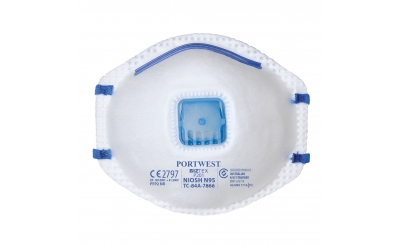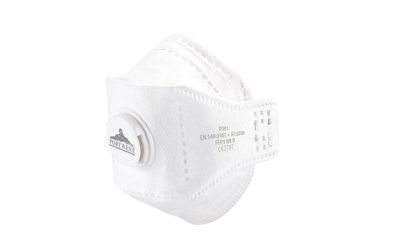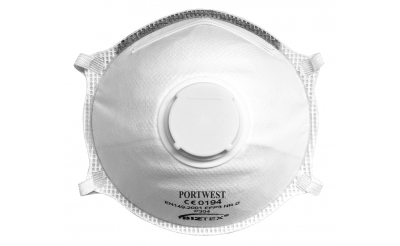PPE
Respiratory Protection
The purpose of respiratory protection equipment is to prevent harmful and unhealthy air contaminants from entering the body via the breathing passageways. When all other measures have been taken to reduce dangerous exposure levels, respiratory protection equipment is the last action. Our range of dust masks are all certified to EN149.
Which type of Dust Mask should you use?
FFP1 Dust Masks protect against low levels of dust, as well as solid and liquid aerosols. It protects against materials in concentrations up to 4x occupational exposure limit (OEL) or 4x assigned protection factor (APF). FFP1 Dust Masks are suitable for hand sanding, drilling, and cutting.
FFP2 Dust Masks protect against moderate levels of dust, as well as solid and liquid aerosols. FFP2 Dust Masks have a higher level of protection than FFP1 – FFP2 masks protect against materials in concentrations up to 12x OEL or 4x APF. FFP2 masks are ideal for plastering and sanding.
FFP3 Dust Masks protect against higher levels of dust. They also protect against solid and liquid aerosols. FFP3 masks protect against materials in concentrations up to 50x OEL or 20x APF. FFP3 masks are suitable for handling hazardous powders, such as those found in the pharmaceutical industry.
It is important to consider the type and level of contaminants to which workers will be exposed. Once you have properly evaluated the airborne hazards in your workplace, you can begin to choose dust masks based on their FFP rating. The best dust mask for your workplace will be one that meets the appropriate FFP rating, and is comfortable and convenient for your workers. Here is a quick guide to the protection levels provided by different dust mask ratings:
| Protection Level | OEL Protection | APF Protection |
| FFP1 | 4x | 4x |
| FFP2 | 12x | 10x |
| FFP3 | 50x | 20x |









